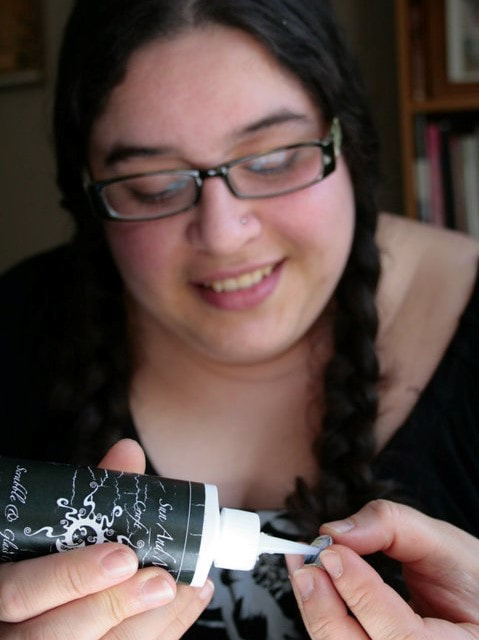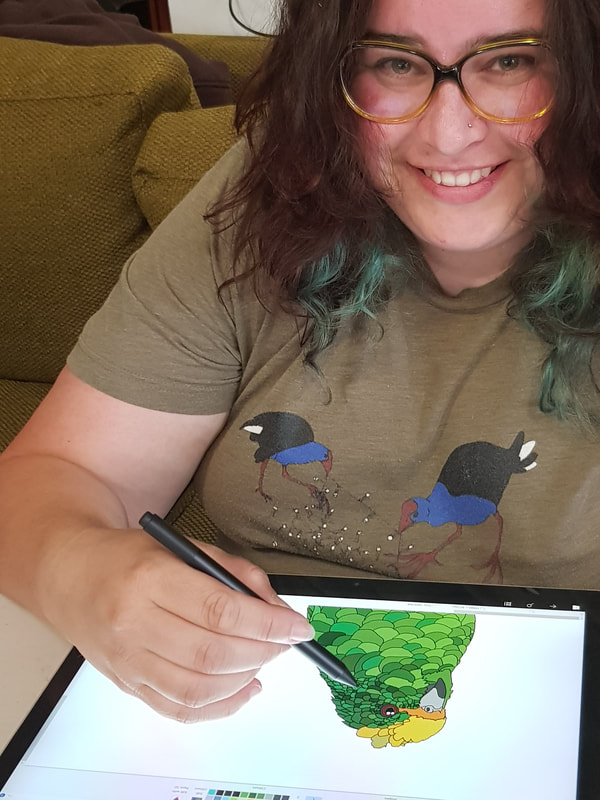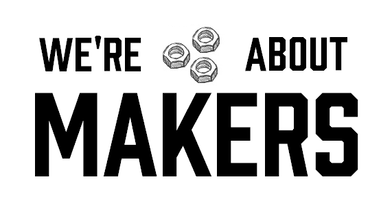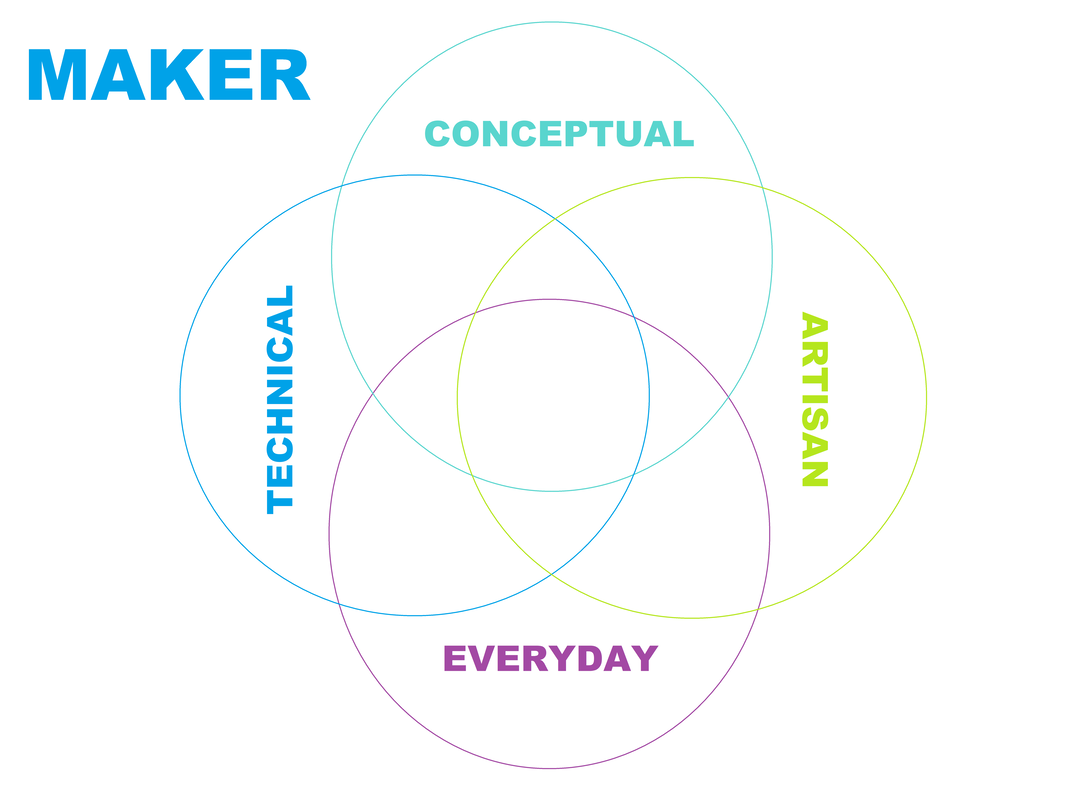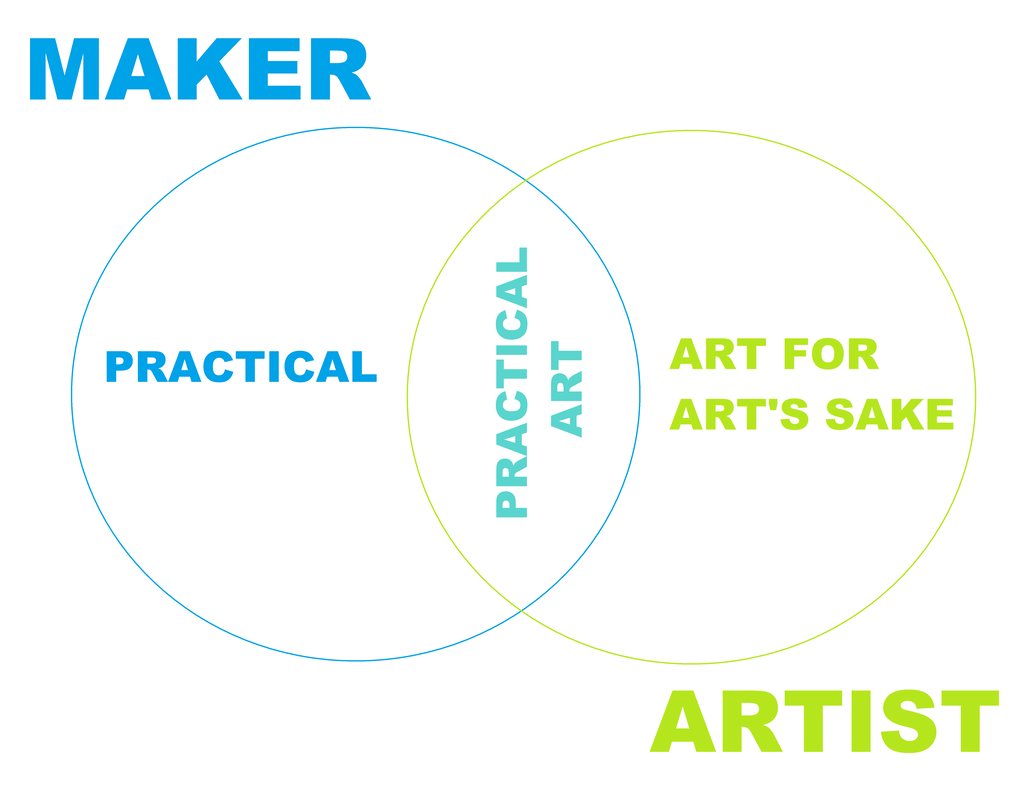There are so many different terms and labels for creative people, and so much baggage associated with them, that I personally prefer the term “maker”. That’s why I called my markets (currently on pause) “Wrought Makers’ Markets” – because it feels more inclusive of all the different types of creatives who sell at markets, but also because of what the word means to me.
What is a “maker” to me?
Makers fall into different categories, in my mind. Here are some of them.
There are conceptual problem-solvers, people who build their solution out of ideas – think entrepreneurs, inventors, people pushing the boundaries of what we think is possible.
There are everyday makers – people who make things that make our everyday lives better, sometimes without us even noticing. These are the baristas, the supermarket bakers, the home cooks and the burger-flippers, the gardeners and mechanics; the people who keep building better and more efficient technologies, the simple comforts that we take for granted, like having a washing machine that works, or being able to recharge our cellphones. The carpenters, plumbers, and the people who keep the traffic lights working. They are also the practical problem-solvers – for example, when something goes wrong with an experience and the person in charge fixes it for you – think customer service people arranging a replacement for a broken or lost item, or when a restaurant forgot to cook your bacon extra-crispy and you get a free dessert, or when a software support person implements a workaround so that end-users can keep working while the fix gets built.
There are the technical makers – the people who design bridges and car engines, the people behind renewable energy sources, the laser-cutters and the software programmers, the game designers and model aeroplane builders.
And then, there are the artisan makers – people who make the things that machines can make – the unnecessary but wonderful crafts. The wood turners, the potters and ceramicists, the chocolatiers and the pastry chefs, the jewellers and the glass workers, the blacksmiths and the leather-workers, the designers and illustrators. These are the people who make beautiful things that meet a practical need whilst being just perfect on their own – the bread that makes you stop everything to savour its crust, or the wine that deserves to breathe before you sip it while watching the sunset.
I drew a Venn diagram to show that these categories can all overlap, too – for example, you could be an artisan baker, or a technical conceptual maker.
So… what is an artist?
An artist, therefore, in the purest sense, is someone who creates beauty for its own sake.
And that’s where I hit a wall.
So… am I an artist?
So in order to justify my drawings, I need them to serve some sort of purpose. Jewellery is a form of self adornment, so it’s in the centre of the artist/maker Venn diagram. So are my fabrics, home decor, scarves, and my craft kits. Practical, but also decorative – artworks by a maker.
So… am I an artist, if my work can be called “art”?
First of all, let’s address the baggage of the word “artist”. There’s all the starving, which I refuse to do, as well as the somewhat pretentious “art, dahling” world, which is not my scene. Yes, I know a good bit about the history of art. No, I don’t need to include visual quotes from the Hellenistic period, or hidden references to the Old Masters in what I create – I might, but that’s to celebrate them, not to separate myself from the ignorant peasants.
Secondly, I find that “real” art needs a message. I have no interest in giving a meaning, or a message, to my pieces – I draw what I like to look at, in a style that gives me pleasure, for the purpose of creating fabrics, jewellery, embroidery kits, etc – so, no, it’s definitely not art for art’s sake, or for the edification of the viewer. My artwork is not political, even if I regularly play with things that are political. My designs do not require interpretation, even if I sometimes draw things that I find important, such as my a bird a day series, which is about our most threatened bird species.
Art is unconstrained by a need to serve a purpose, whereas my work is designed to do a job.
So… no, I do not consider myself an artist. Artists and I run on parallel paths, but what I make is designed, end-to-end, to be used, not just to be.
So, if my “artwork” is practical, am I a maker?
Yes. Definitely.
I am in the centre of the Venn diagram – and I choose to self-define as a maker, rather than an artist, although I am happy to call my output both “designs” and “artwork”.
I make things for specific purposes. BUT they are also primarily decorative – which is why I call what I make “functional art”.

